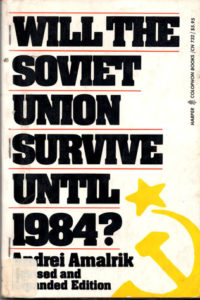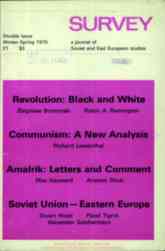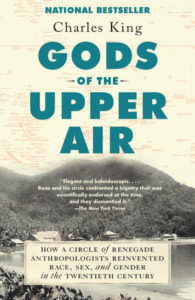 In his essay “Will the Soviet Union Survive Until 1984?”, initially published in the London-based journal Survey, Andrei Amalrik identified the process through which a great power succumbs to self-delusion, notes Charles King, Professor of International Affairs and Government at Georgetown University.
In his essay “Will the Soviet Union Survive Until 1984?”, initially published in the London-based journal Survey, Andrei Amalrik identified the process through which a great power succumbs to self-delusion, notes Charles King, Professor of International Affairs and Government at Georgetown University.
By the 1960s, the Soviet government had hammered into existence a country that citizens under Lenin or Stalin would have thought impossible. Consumer goods, single-family apartments, a space program, international sports heroes, a globe-spanning airline—the successes of Soviet society were on full display. Yet more than any other thinker at the time, Amalrik grasped the fact that countries decay only in retrospect, he writes in How a Great Power Falls Apart: Decline Is Invisible From the Inside, an essay for Foreign Affairs:
 Powerful states, as well as their inhabitants, tend to be congenital conservatives when it comes to their own futures. The “comfort cult,” as he called it—the tendency in seemingly stable societies to believe “that ‘Reason will prevail’ and that ‘Everything will be all right’”—is seductive. As a result, when a terminal crisis comes, it is likely to be unexpected, confusing, and catastrophic, with the causes so seemingly trivial, the consequences so easily reparable if political leaders would only do the right thing, that no one can quite believe it has come to this.
Powerful states, as well as their inhabitants, tend to be congenital conservatives when it comes to their own futures. The “comfort cult,” as he called it—the tendency in seemingly stable societies to believe “that ‘Reason will prevail’ and that ‘Everything will be all right’”—is seductive. As a result, when a terminal crisis comes, it is likely to be unexpected, confusing, and catastrophic, with the causes so seemingly trivial, the consequences so easily reparable if political leaders would only do the right thing, that no one can quite believe it has come to this.
Amalrik identified four drivers of this process, adds King, the author of Gods of the Upper Air:
- One was the “moral weariness” engendered by an expansionist, interventionist foreign policy and the never-ending warfare that ensued.
- Another was the economic hardship that a prolonged military conflict—in Amalrik’s imagination, a coming Soviet-Chinese war—would produce.
 A third was the fact that the government would grow increasingly intolerant of public expressions of discontent and violently suppress “sporadic eruptions of popular dissatisfaction, or local riots.” These crackdowns were likely to be especially brutal, he argued, when the suppressors—police or internal security troops—were “of a nationality other than that of the population that is rioting,” which would in turn “sharpen enmities among the nationalities.”
A third was the fact that the government would grow increasingly intolerant of public expressions of discontent and violently suppress “sporadic eruptions of popular dissatisfaction, or local riots.” These crackdowns were likely to be especially brutal, he argued, when the suppressors—police or internal security troops—were “of a nationality other than that of the population that is rioting,” which would in turn “sharpen enmities among the nationalities.”- It was a fourth tendency, however, that would spell the real end of the Soviet Union: the calculation, by some significant portion of the political elite, that it could best guarantee its own future by jettisoning its relationship to the national capital. Amalrik supposed that this might occur among Soviet ethnic minorities, “first in the Baltic area, the Caucasus and the Ukraine, then in Central Asia and along the Volga”—a sequence that turned out to be exactly correct……..RTWT







